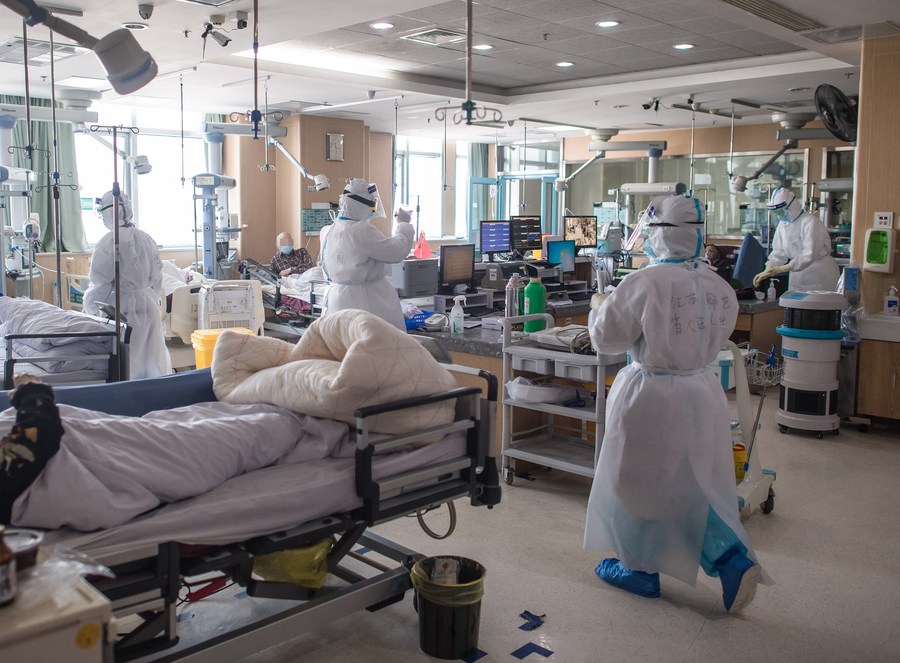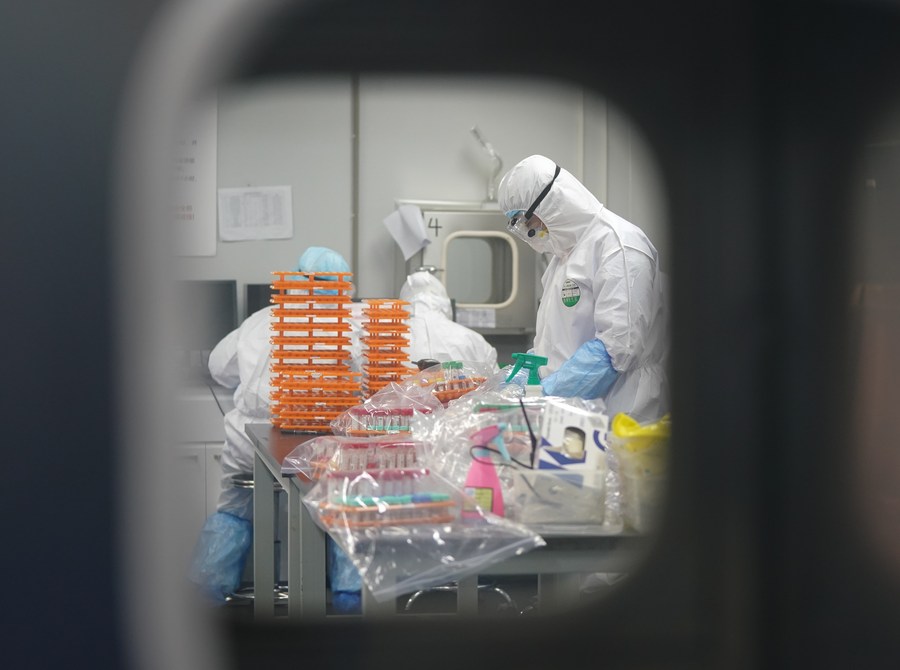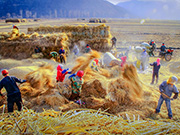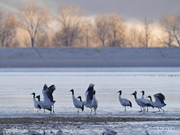


Han Yi (1st R, front), a medical staff member from Jiangsu Province, works at an ICU ward of the First Hospital of Wuhan City in Wuhan, central China's Hubei Province, Feb. 22, 2020. (Xinhua/Xiao Yijiu)
"There was a lot of data ready when we arrived," Thea Kolsen Fischer, professor of virus epidemics and infections at the University of Copenhagen, said in an interview published by the Danish newspaper Politiken.
COPENHAGEN, Feb. 23 (Xinhua) -- A Danish professor on a World Health Organization team on the COVID-19 origin-tracing mission in Wuhan has criticized Western media outlets for distorting information about cooperation with Chinese authorities, local news reported Monday.
"There was a lot of data ready when we arrived," Thea Kolsen Fischer, professor of virus epidemics and infections at the University of Copenhagen, said in an interview published by the Danish newspaper Politiken.
A misguiding report published by The New York Times on Feb. 12 accused Chinese scientists of refusing to share important data about the early days of the COVID-19 pandemic, citing independent investigators for the WHO.
"We had mutual respect for each other's views and competencies," Fischer said, praising the cooperation between the WHO team and the Chinese experts on data and hypotheses during their month-long research.
The expert commended both the WHO team and the Chinese experts for managing to stay free of any major political interests.

Staff members do nucleic acid testing work at a novel coronavirus detection lab in Wuhan, central China's Hubei Province, Feb. 22, 2020. (Xinhua/Cheng Min)
"I can't stress enough how rewarding a process the trip has been. It went beyond all expectations in many ways. When we have had discussions in the expert team, it has only been based on data and documentation," she said.
The international team arrived in Wuhan on Jan. 14 and formed a joint body with Chinese experts for the Chinese part of the global study on the novel coronavirus origins.
At a press conference on Feb. 9, the joint study team said that a laboratory incident is "extremely unlikely" as the cause of COVID-19.
It said introduction through an intermediary host species is "the most likely" passway.
Direct transmission or introduction through cold-chain food is also likely.

 Award-winning photos show poverty reduction achievements in NE China's Jilin province
Award-winning photos show poverty reduction achievements in NE China's Jilin province People dance to greet advent of New Year in Ameiqituo Town, Guizhou
People dance to greet advent of New Year in Ameiqituo Town, Guizhou Fire brigade in Shanghai holds group wedding
Fire brigade in Shanghai holds group wedding Tourists enjoy ice sculptures in Datan Town, north China
Tourists enjoy ice sculptures in Datan Town, north China Sunset scenery of Dayan Pagoda in Xi'an
Sunset scenery of Dayan Pagoda in Xi'an Tourists have fun at scenic spot in Nanlong Town, NW China
Tourists have fun at scenic spot in Nanlong Town, NW China Harbin attracts tourists by making best use of ice in winter
Harbin attracts tourists by making best use of ice in winter In pics: FIS Alpine Ski Women's World Cup Slalom
In pics: FIS Alpine Ski Women's World Cup Slalom Black-necked cranes rest at reservoir in Lhunzhub County, Lhasa
Black-necked cranes rest at reservoir in Lhunzhub County, Lhasa China's FAST telescope will be available to foreign scientists in April
China's FAST telescope will be available to foreign scientists in April